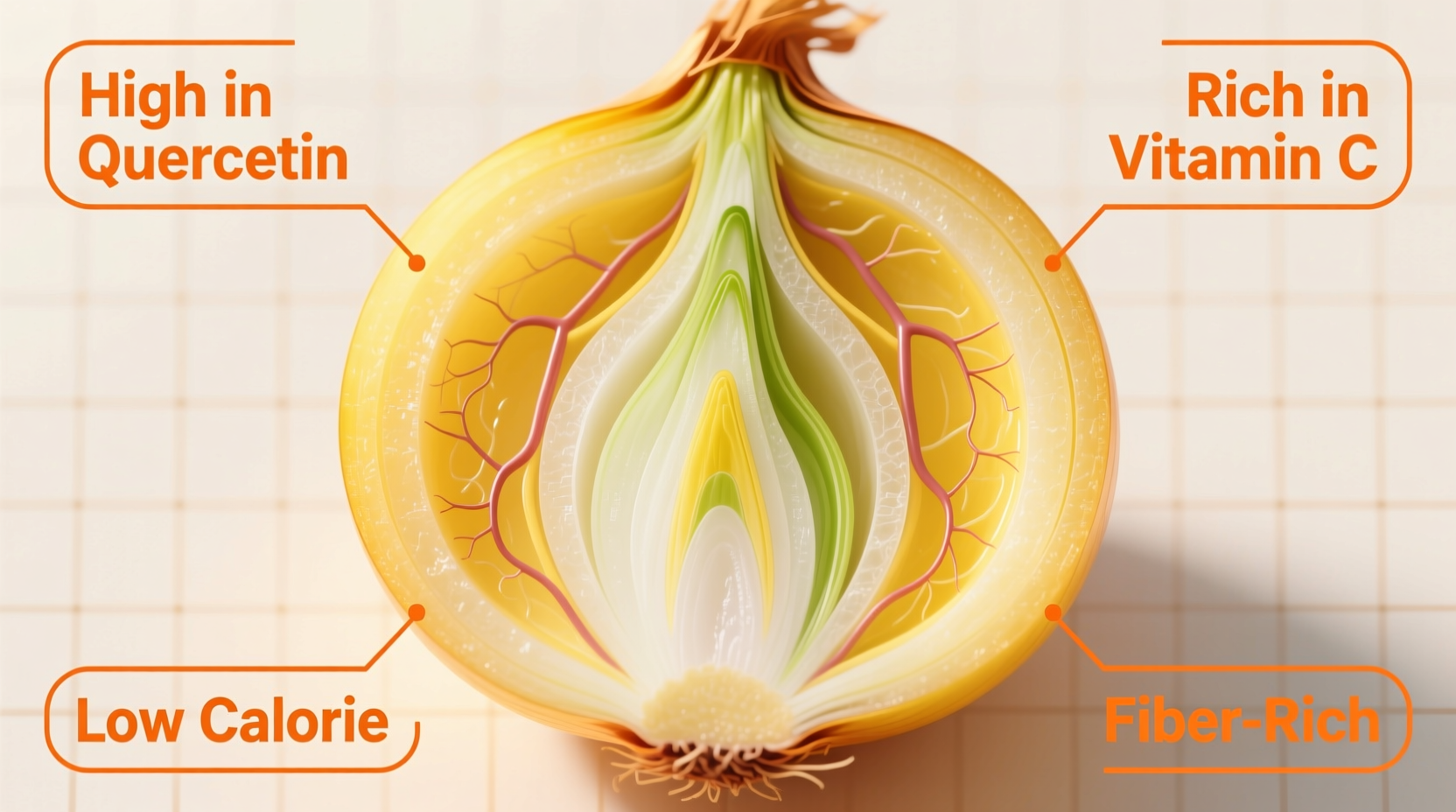Unlocking the Nutritional Power of Yellow Onions
When you reach for that familiar golden-brown onion in your kitchen, you're grabbing one of nature's most versatile nutritional powerhouses. Yellow onions dominate supermarket shelves for good reason—they offer the perfect balance of flavor intensity and nutritional density that makes them indispensable in healthy cooking. Unlike their milder white or red counterparts, yellow onions contain the highest concentration of beneficial organosulfur compounds and flavonoids, particularly quercetin, which gives them their distinctive nutritional edge.
What Makes Yellow Onions Nutritionally Unique
The distinctive papery brown skin of yellow onions isn't just for protection—it's a visual indicator of their superior flavonoid content. When researchers at the USDA compared onion varieties, they found yellow onions contain up to 11 times more quercetin than white onions. This powerful antioxidant has been studied extensively for its role in cardiovascular health and inflammation reduction. The USDA FoodData Central database confirms yellow onions' nutritional profile makes them particularly valuable for daily consumption.
| Nutrient | Yellow Onion (100g) | Red Onion (100g) | White Onion (100g) |
|---|---|---|---|
| Calories | 44 kcal | 40 kcal | 42 kcal |
| Quercetin | 16.2 mg | 13.1 mg | 1.5 mg |
| Vitamin C | 7.4 mg (11% DV) | 11.8 mg (15% DV) | 6.3 mg (8% DV) |
| Dietary Fiber | 1.7 g (6% DV) | 1.7 g (6% DV) | 1.6 g (6% DV) |
| Sulfur Compounds | High | Moderate | Low |
Science-Backed Health Benefits You Can't Ignore
Multiple studies published in the Journal of Agricultural and Food Chemistry demonstrate that the quercetin in yellow onions significantly reduces oxidative stress markers in human subjects. What makes yellow onions particularly effective is their unique combination of compounds—when you chop or crush them, the enzyme alliinase activates, creating beneficial organosulfur compounds that work synergistically with quercetin.
Research from the American Heart Association shows regular consumption of yellow onions correlates with improved endothelial function and modest blood pressure reduction. The key appears to be consuming them raw or lightly cooked—prolonged high-heat cooking degrades some of the most beneficial compounds.

Maximizing Nutritional Benefits in Your Kitchen
To get the most nutritional value from yellow onions, follow these evidence-based preparation techniques:
- Wait before cooking: After chopping, let onions sit for 5-10 minutes before heating to maximize beneficial compound formation
- Use the right cut: Finely diced onions release more beneficial compounds than large chunks
- Pair wisely: Combine with healthy fats like olive oil to enhance absorption of fat-soluble compounds
- Don't overcook: Light sautéing preserves more nutrients than prolonged boiling or frying
- Use the whole onion: The layers closest to the skin contain the highest concentration of quercetin
Practical Applications for Daily Health
For cardiovascular support, aim for ½ cup of raw or lightly cooked yellow onions daily. The Centers for Disease Control and Prevention recommends incorporating such functional foods as part of a heart-healthy diet. When managing blood sugar, pair yellow onions with complex carbohydrates—their chromium content helps improve insulin sensitivity.
Yellow onions work particularly well in Mediterranean-style dishes where their flavor and nutritional profile complement other healthy ingredients. Try adding raw yellow onion to salads, lightly sautéed in vegetable stir-fries, or roasted with other vegetables to maintain maximum nutritional value while enhancing flavor complexity.
Important Contextual Considerations
While yellow onions offer impressive nutritional benefits, certain considerations affect their effectiveness:
- Storage matters: Keep unpeeled onions in a cool, dry place—refrigeration reduces quercetin content by up to 30% over time
- Seasonal variation: Fall-harvested onions contain 15-20% more quercetin than spring varieties
- Digestive sensitivity: Some individuals experience gastrointestinal discomfort—cooking reduces this risk while preserving many benefits
- Medication interactions: Those on blood thinners should maintain consistent consumption rather than dramatic increases
Separating Fact from Fiction
Despite popular claims, yellow onions won't cure serious illnesses on their own. However, their role in a balanced diet is scientifically validated. The National Cancer Institute notes that while no single food prevents cancer, diets rich in allium vegetables like yellow onions are associated with reduced risk of certain cancers. Don't believe claims about miraculous detox effects—onions support natural liver function but don't "detox" your body beyond what your organs already do efficiently.
Putting It All Together
Yellow onions deserve their place as a kitchen staple not just for flavor, but for their impressive nutritional profile. By understanding how to select, store, and prepare them properly, you can maximize their health benefits while enjoying their culinary versatility. Whether you're building flavor foundations for soups and stews or adding raw crunch to salads, yellow onions offer a simple way to boost your daily nutrient intake with scientifically supported benefits.











 浙公网安备
33010002000092号
浙公网安备
33010002000092号 浙B2-20120091-4
浙B2-20120091-4